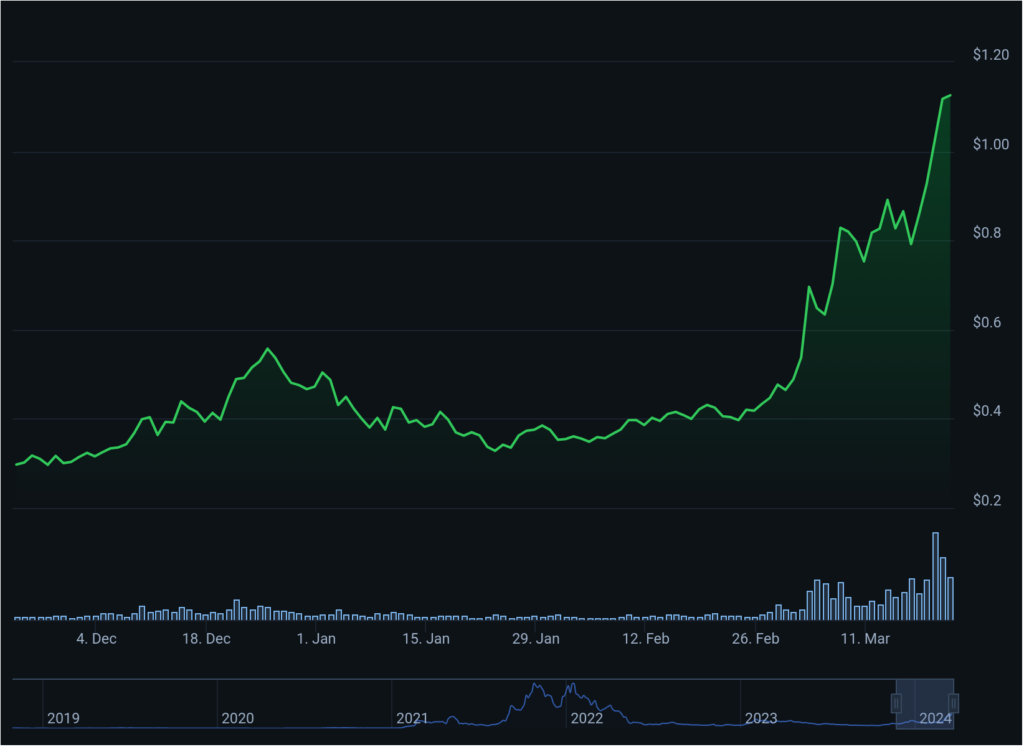Fantom’s FTM token surges over 190% ahead of Sonic upgrade

Fantom’s native token FTM is up over 190% in just four weeks, with most anticipating the Sonic upgrade.
The surge has spotlighted FTM as the top-performing non-meme cryptocurrency among the top 100 digital assets by market value and elevated its price from $0.40 to $1.16.
This is the highest the token has been since April 2022, with its market capitalization leaping to $3.29 billion, positioning it as the 44th largest digital asset globally, according to CoinGecko data.
In contrast, Bitcoin (BTC), the longstanding market leader, has seen a 28% increase in the same timeframe, while Ether (ETH), the second-largest cryptocurrency, has risen by nearly 20%. The broader market has experienced a 33% uplift, highlighting a period of robust growth across the crypto sphere.

The anticipated Sonic upgrade to Fantom‘s blockchain is a pivotal factor behind this investor enthusiasm. Slated to replace the current mainnet Opera in the spring of this year, the Sonic upgrade promises to enhance transaction processing speeds significantly.
The testnet, launched in October of the previous year, showcased a theoretical maximum throughput of 2,000 transactions per second (TPS) and a time to finality of 1.1 seconds—remarkable improvements over Opera mainnet’s current capacity of just 3.2 TPS.
Transaction throughput and time to finality are critical metrics in the blockchain domain, indicating the efficiency and reliability of transaction processing. The Sonic upgrade will also introduce the Fantom Virtual Machine (FVM), which will substantially accelerate smart contract execution speeds.
The upgrade aims to allow for smoother Ethereum Virtual Machine (EVM) code translation, facilitating easier migration for developers of Ethereum-based decentralized applications to Fantom and ensuring backward compatibility.
Reflexivity Research highlights the broader implications of the Sonic upgrade for the Fantom ecosystem, especially in decentralized finance (defi), blockchain gaming, high-frequency applications, and the Internet of Things.















